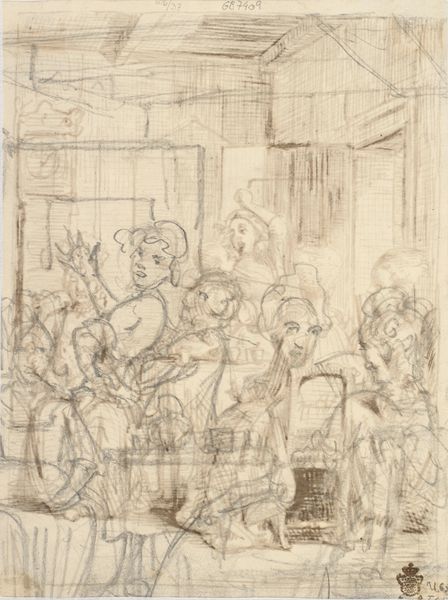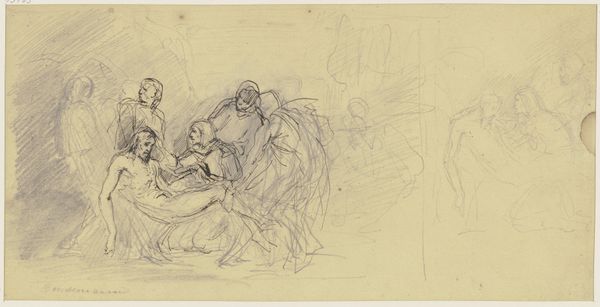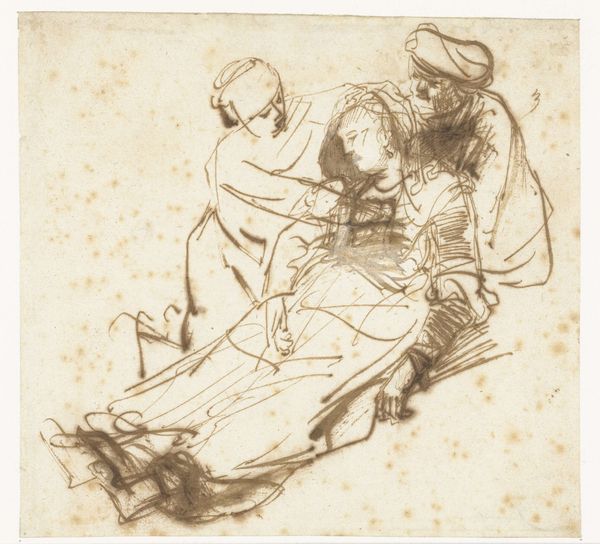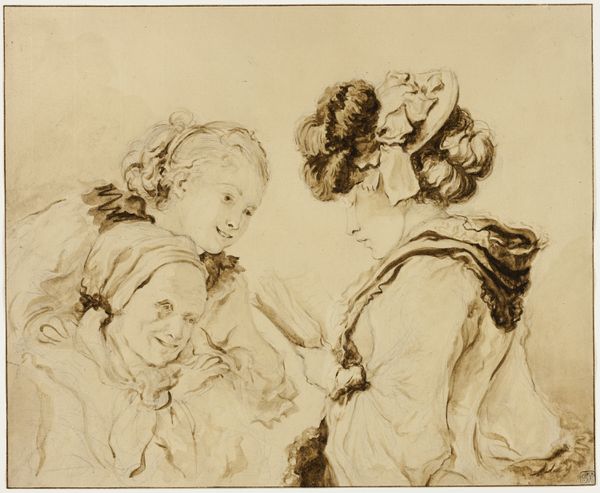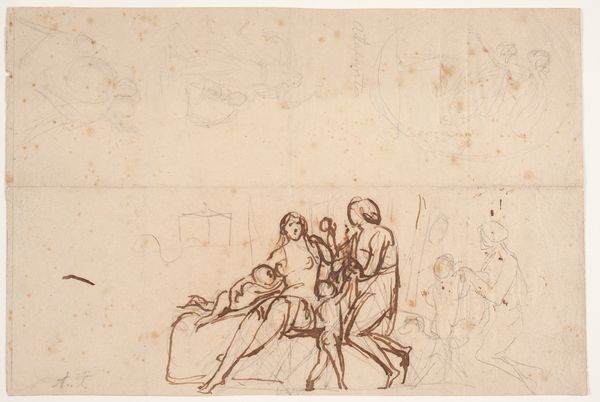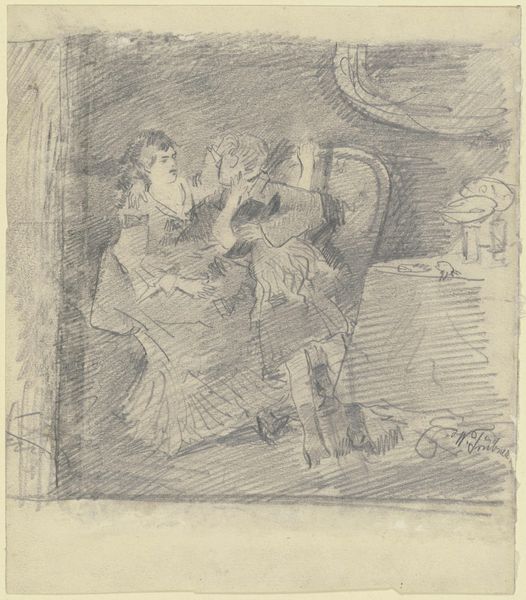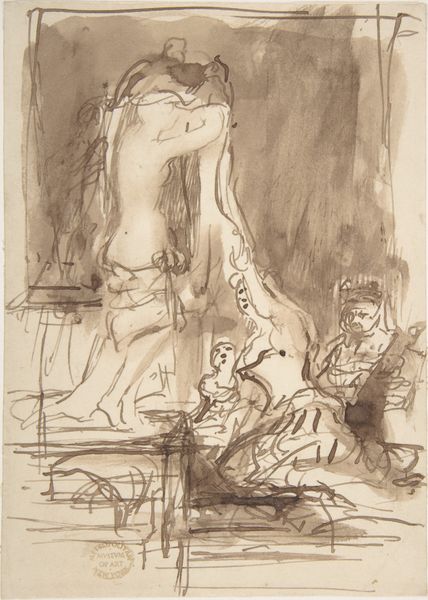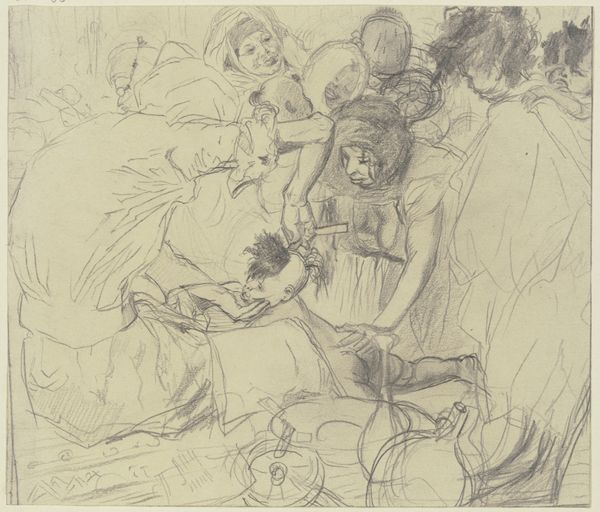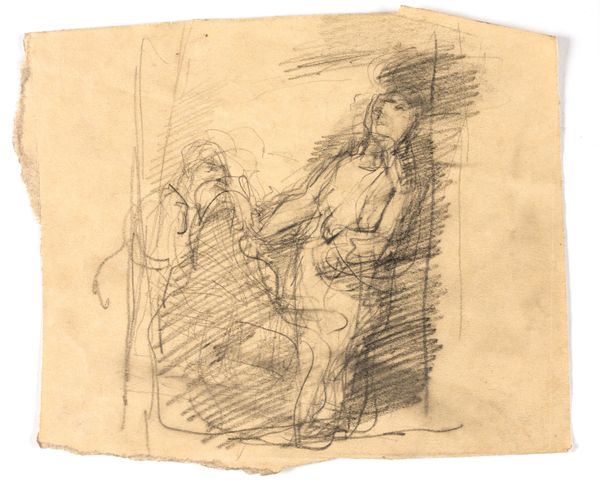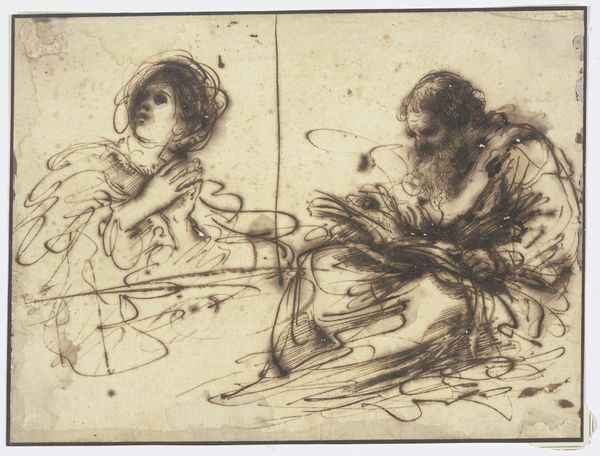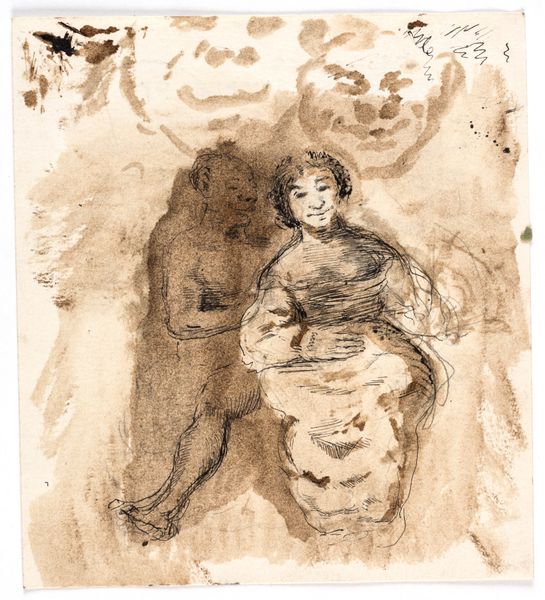
drawing, paper, pencil
#
portrait
#
drawing
#
neoclacissism
#
pencil sketch
#
paper
#
pencil
#
genre-painting
Dimensions: 143 mm (height) x 148 mm (width) (bladmaal)
Curator: A rather captivating drawing in pencil on paper by Jens Juel. We’re looking at "Kompositionsudkast til det Ankerske familiebillede," which roughly translates to compositional sketch for the Anker family portrait, dated 1792. Editor: Immediately, I'm struck by the tenderness and the almost dreamlike quality the pencil lines create. It has a very intimate feeling, doesn't it? Almost as if we’re peering into a private moment. Curator: Indeed. And what is also captivating about the drawing, which stands as an exemplary work from the Neoclassical art movement, is the symmetry achieved, juxtaposing it against the relaxed informality one often witnesses in genre-based paintings. Editor: The informality speaks volumes, reflecting shifting societal values where there was an increased focus on family and domestic life as core pillars of society, certainly more than what the Renaissance or Baroque periods may have focused on. I imagine portraits like this also boosted the prestige of a family's status and morality. Curator: I find the artist's mark-making and rendering techniques absolutely compelling. Take a closer look at the details on their clothes and accessories. It masterfully uses hatching and cross-hatching to define forms and render tones with so few materials. What would you make of that? Editor: Yes, you can almost imagine the finished portrait. But I find myself more interested in the incompleteness, those sketchy lines trailing off into implied shapes. The very lack of finish invites our imagination to collaborate, almost suggesting the ephemeral nature of even the most grounded institutions such as the family itself. Curator: The composition itself guides our interpretation. The placement of figures, the implied architectural setting; it subtly yet effectively elevates a common family gathering to this status of neoclassical grandeur, even within the apparent informal tone we began with. Editor: Seeing this pencil sketch helps one appreciate that portraits were never just simple likenesses; they were potent displays of social aspiration. Thank you, Jens Juel, for capturing such fascinating nuance. Curator: A wonderful perspective, as always. Thank you. A truly interesting glimpse into not only Jens Juel’s process, but also 18th-century ideals of family and representation.
Comments
No comments
Be the first to comment and join the conversation on the ultimate creative platform.
